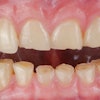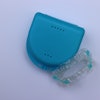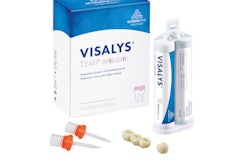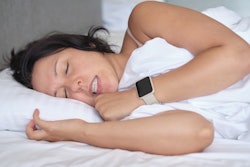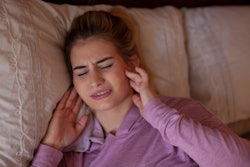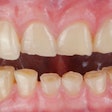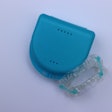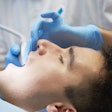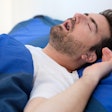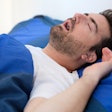Though polymethyl methacrylate (PMMA) splints can help lessen tooth wear in patients with sleep-related teeth grinding, some wear may still occur, according to a study recently published in BMC Oral Health.
Therefore, managing sleep bruxism effectively may require wearing a mouthguard combined with strategies like behavioral and dietary counseling, the authors wrote.
“While PMMA splints may help reduce tooth wear during sleep-related bruxism, measurable tooth wear still occurred,” wrote the authors, led by Irene Laksamikeeratikul of Mahidol University in Thailand (BMC Oral Health, August 21, 2025, Vol. 25, 1349).
The study aimed to evaluate tooth wear in canines and first molars of sleep bruxism patients using intraoral scanning. A cohort of 16 adults wearing PMMA splints was monitored for 18 months with baseline and follow-up scans, they wrote.
Clinical assessments looked for signs of bruxism -- including tooth wear, muscle hypertrophy, tongue or lip indentations, and a linea alba on the buccal mucosa -- following international consensus criteria. Additionally, distinct wear facets were noted on the occlusal splints during six-month follow-ups.
Over the follow-up period, all tooth groups showed statistically significant volumetric reduction (p < 0.001). No significant differences in wear were found between upper and lower arches for canines (p = 0.940) or first molars (p = 0.207), although the lower arch showed slightly greater median wear, they wrote.
Specific reductions included the upper right canine (0.1569 to 0.1248 mm³), upper left canine (0.1658 to 0.1266 mm³), and lower canines (0.1750 to 0.1439 mm³; 0.1636 to 0.1437 mm³). In the first molars, the upper right decreased from 0.1372 to 0.1246 mm³, the upper left from 0.1588 to 0.1434 mm³, the lower left from 0.1600 to 0.1541 mm³, and the lower right from 0.1328 to 0.1165 mm³.
The study, however, had limitations. The 18-month follow-up may not fully reflect the long-term progression of tooth wear in sleep bruxism, the authors added.
“PMMA-based occlusal splints are supported as a protective adjunct in the management of sleep bruxism when combined with long-term monitoring and patient-centered care,” they concluded.

